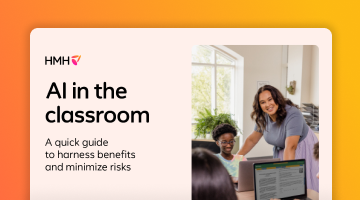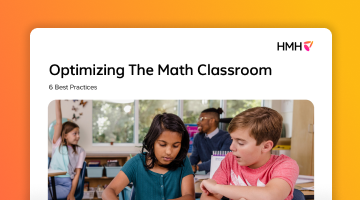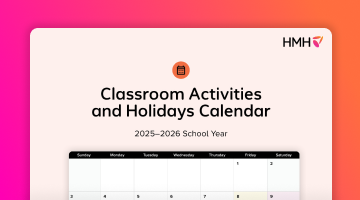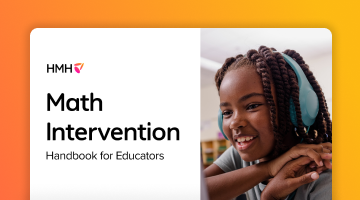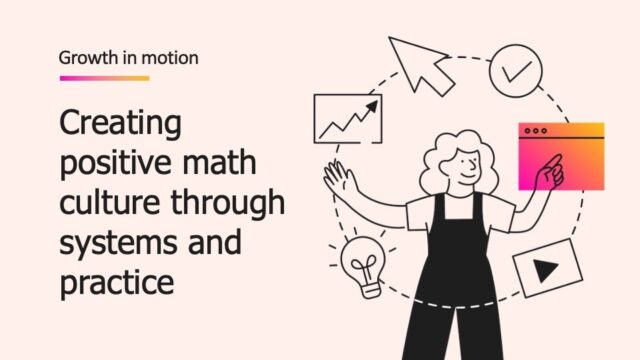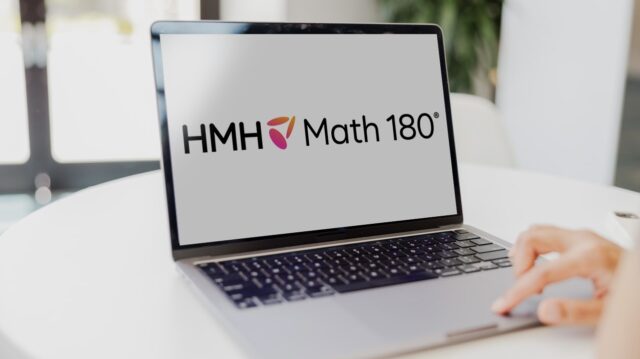
Let’s start with a warm-up activity. Quick, what shapes do you see?

How did you know? Did you analyze the shapes’ proportions? Count the sides? Did you consult a website or book that gave you images to compare with? Or did you just instinctively know?
When you can do something instantly, or automatically if you will, without much conscious thought, you can do it with automaticity.
What is automaticity?
Automaticity refers to knowing something without having to think about it, like in the opening example of recognizing that the three shapes are a triangle, square, and circle. There is no consensus on how to precisely define a psychological process as being automatic, but there is “conceptual overlap among certain goal-related features” such as being efficient and fast without involving much conscious thought or needing to access deeper working memory. People can have automaticity in much more than just recognizing shapes. It could apply, for example, to recognizing words or faces or knowing how to ride a bike or walk a familiar route.
In a classroom setting, automaticity is often referenced in language learning. When the brain regularly connects sounds to letters, students learn to recognize words automatically and develop orthographic fluency, which is to say they recognize written words rapidly and accurately. Automaticity is needed to become a competent reader and read fluently, as readers must be able to recognize most words on sight without having to sound each letter and out. In this article, automaticity is related to math and specifically what it means for students to build fluency in math facts.
What is automaticity in math?
There are many math procedures and concepts that learners strive to become automatic in, starting with concepts as fundamental as being able to recognize numbers and shapes. At the highest levels, math students build automaticity in recognizing different identities and properties. In general, being able to do math competently requires automaticity in a variety of skills.
Most commonly, automaticity refers to automaticity of math facts. Successful math students should eventually know sums like 10 + 10 or products like 4 × 2 without having to spend time thinking about them. A major part of developing fact fluency in math is building automaticity in basic sums, differences, products, and quotients.
The importance of math automaticity
There is ample evidence showing that automaticity is “critical for the general success of students in mathematics.” One major reason is that automaticity is needed to develop procedural fluency, which is the ability for students to apply procedures efficiently, accurately, and across different contexts. In order for students to become fluent in math procedures, they can’t be slowed down at every calculation.
To see why, imagine a student who is tasked with solving the one-step algebraic equation 3x + 5 = 11. At this level, a teacher is likely focused on the meanings of variables and equality. If students still need support on calculating that 11 – 5 is 6 or that 6 ÷ 3 is 2, they are likely to experience a high cognitive load as they work through the more complex task of solving an equation for a variable. All multistep problems in effect become more time-consuming and difficult, and students are more likely to make errors.
Notice that the procedure of, say, subtracting 5 from both sides of the equation cannot be fully disconnected from the concept of an equation and what it means to solve one. Learning math ultimately requires attending to both procedural fluency and conceptual understanding, two components of math education that are sometimes pitted against each other in a false dichotomy. They are both necessary and work together to build math understanding. Being fluent in procedures helps students understand concepts more easily, and understanding concepts helps in turn to develop fluency.
Consider a real-world problem like, “If a sports venue costs $5 to enter and $3 per hour to play in, how many hours could you play if you had $11 to spend?” If students get consistently stuck on the arithmetic needed to solve 3x + 5 = 11, then their teachers will have a harder time using that equation in service of a larger problem.
The difference between fluency and automaticity in math
Automaticity essentially refers to how fast students can recall a math fact, whereas fluency requires understanding the meaning of the math fact and being able to apply it flexibly. As an example, a student might know instantly that 3 × 4 is 12 (i.e., have automaticity with that math fact) but not yet be fluent because they don’t understand how to apply that math fact to a situation like finding the area of a yard that is 30 feet wide and 40 feet long.
In writing about oral reading fluency, intervention expert Dr. Amy Endo explains the difference as automaticity referring to processing speed, compared with fluency, which goes beyond automaticity and includes other elements. In the case of reading, Endo cites “the intonation, phrasing, and expression students use when reading text,” whereas in math, other elements of fluency include efficiency, accuracy, and flexibility. In this sense, automaticity is only one piece of fluency, which is a broader, more robust objective. As explained by researchers out of the University of North Georgia, “Fluency is the end goal and considered true mastery of the concept when reached.” A student fluent in math facts is not only automatic in recalling them but also understands how they can be derived and applied.
Since improved automaticity builds fluency in math, teachers often focus on students’ efficiency with math facts. However, just as important is for students to develop strategies. Drs. Jennifer Bay-Williams and Gina Kling summarize the research findings in their book Math Fact Fluency: “Many studies over many years have compared traditional basic fact instruction (i.e., drill) to strategy-focused instruction. All of them show that strategy groups outperform their peers on . . . automaticity and accuracy.” Strategy development is necessary to build fluency. Students need to be more than fast; they need to understand what they’re doing and be able to call on different strategies when needed.
How to teach automaticity in math
Many readers may recall being drilled on math facts in school, possibly completing timed worksheets aimed at performing arithmetic operations as fast as possible. There is strong evidence that timed activities can help to build fluency for elementary students struggling in math. Math fact practice worksheets can be powerful interventions to help students follow what the teacher is saying and tackle more complex problems.
Yet such timing-focused activities should be used strategically and, in most cases, sparingly. Part of learning math facts also involves using them in different contexts and seeing them applied to new situations. Developing automaticity in math is not based on fastest recall but, according to authors Drs. Douglas H. Clements and Julie Sarama in the book Learning and Teaching Early Math, on “repeated experiencing.”
The authors of Figuring Out Fluency in Mathematics Teaching and Learning, Dr. Jennifer Bay-Williams and John SanGiovanni, caution us against focusing only on speed. Being slow to complete a timed worksheet is by no means the same as being “bad” at math. “Evaluating students based on an oversimplified (and inaccurate) perception of fluency—saying they are ‘good’ at math because they are fast, or worse, saying they are ‘bad’ at math because they are not—is a deficit view of students.” Memorizing math facts cannot simply be forced, and in general, all students benefit from more strategic practice.
Teaching math automaticity is a basic part of math instruction, from memorizing math facts down to automatically recognizing squares and circles. And while automaticity generally refers to speed, its true value lies in freeing up cognitive resources so students can focus on meaning and solve problems. When developed in service of fluency and tied to different math concepts, automaticity is a powerful part of students developing proficiency in math.
***
Explore HMH’s math solutions to help your students build automaticity in math and envision themselves excelling in math throughout their lives.
Get our free math intervention guide full of research-backed information.

